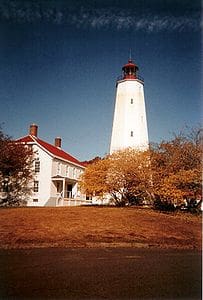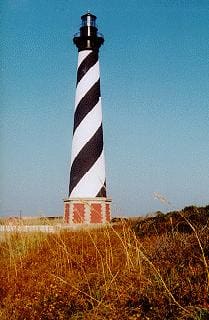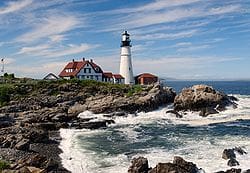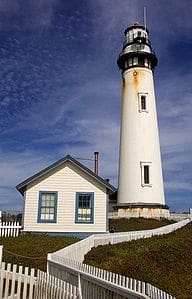American Lighthouses have stood along the Atlantic and Pacific Coasts for over two centuries to warn mariners of dangerous rocks, reefs, and shoals. There is a mystique and romance about the their unique characters, each responsible for its own stretch of sea. Many travelers “collect” lighthouse visits and here are some of the best to enjoy this summer.

Sandy Hook Light – The oldest lighthouse in the US was built at the tip of Sandy Hook, NJ in 1764 to help navigate the southern end of the NY Harbor. When built, it was about 500 feet from the tip of the land spit, but due to sediment shift called longshore transport, the lighthouse now sits almost a mile and a half from the sea. The Sandy Hook Light is open for free tours during summer weekends.

Cape Hatteras Lighthouse – At 208 feet, this light is considered the tallest lighthouse in the US. It was built on Hatteras Island, of the Outer Banks of North Carolina. Originally commissioned by Congress in 1797 and completed in 1803, it marks the dangerous shoals where the warm Gulfstream meets the cold Labrador current, creating perfect conditions for major storms. The resulting shifting sandbars made it a perilous point for ships, giving rise to the nickname “the Graveyard of the Atlantic.” Constant encroachment of the sea put the lighthouse at risk and a controversial plan to move the whole lighthouse back 2870 feet to safety was put into action. The massive operation was successfully completed in 2000 and the lighthouse was reopened to the public. Visitors can climb the 268 steps for a bird’s eye view of the Atlantic.

Portland Head Light – Located in Cape Elizabeth, Maine near Portland, this lighthouse is the oldest in the state. Standing 80 feet tall in an iconic stance over the rugged coast of breaking waves, this lighthouse is said to be the most photographed in North America. Begun in 1787 under the directive of George Washington, this light house is one of only four colonial lighthouses that have never been rebuilt. It played a significant role in the Civil War to stop ships from being raided.

Pigeon Point Lighthouse –Lighthouses were necessary to guide Pacific mariners too, and since 1872 this one has perched on a cliff about 50 miles south of San Francisco, California. On the coast along scenic Highway 1, Pigeon Point Light Station State Historic Park is home to the lighthouse and keeper’s quarters. The restored keeper’s quarters serve guest as a unique hostel. On the weekends, free history tours are given in the park and it is a popular spot for whale watching. It was originally called Punta de las Balenas , which means whale point, but was renamed after the ship “Carrier Pigeon” which crashed there in 1853. At 115 feet, it is one of the tallest lighthouse s and each November a popular photography event takes place when all 24 beams are lit for a solid 5 minutes so people can take long exposure photographs.

Point Reyes Lighthouse – This lighthouse in Marin County, California is a 16-sided, 37-foot tower and a twin of the Cape Mendocino light. It is nestled on the cliff 308 steps below the plateau above where the keeper’s quarters are located. Point Reyes has a history of being the windiest and foggiest on the Pacific Coast. It is subject to violent gales and is frequently blanketed by fog, thus the necessity of a functioning light to aid ships. It was first lit in 1870 and continues to shine today.






Portland Head Light looks really majestic! great post .. lighthouses are mariner’s friends!
Agreed – Portland Head Light is an amazing sight! The waves crashing violently against the rocks makes me think how dangerous sailing was centuries ago (and before GPS!). – Beverly